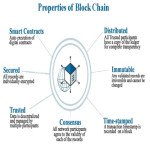Building an IoT Security Automation software is a
comprehensive task that involves developing solutions to secure Internet of
Things (IoT) devices and networks. IoT devices are often vulnerable due to weak
security protocols, limited computing resources, and inconsistent updates. Your
IoT security automation platform should provide continuous monitoring,
automated threat detection, configuration management, and response to potential
vulnerabilities or attacks.
Steps to Build IoT Security Automation Software
1. Define the Scope and
Requirements
- Identify the Target Audience:
Focus on specific industries that rely heavily on IoT, such as smart
homes, healthcare, manufacturing, logistics, or smart cities.
- Understand IoT Device Types:
IoT devices vary in capability, from simple sensors to complex industrial
machines. Your platform should be adaptable to a range of devices,
operating systems (OS), and protocols.
- Set Key Objectives:
- Continuous
monitoring and detection of anomalous behavior.
- Automated
security management (e.g., configuration, patching).
- Threat
detection, analysis, and response.
- Secure
device onboarding and identity management.
- Real-time
alerts and incident response automation.
2. Choose the Architecture
IoT security software typically follows a cloud-native, microservices-based
architecture due to its scalability and flexibility.
Key Architectural Components:
- Data Collection Layer:
Collect data from IoT devices, including device health, behavior, and
network traffic.
- AI/ML Engine: Analyze the
collected data for anomaly detection, behavior modeling, and threat
intelligence. Use machine learning algorithms to detect deviations from
normal patterns.
- Orchestration Engine:
Automatically enforce security policies, apply patches, configure devices,
and quarantine compromised devices.
- Dashboard and Analytics:
Provide a centralized interface for administrators to view device status,
threats, alerts, and security recommendations.
- Integration Layer: Connect
to existing Security Information and Event Management (SIEM) systems,
cloud services, and other enterprise security tools.
3. Develop Core Features
A. Device and Network Discovery
- Purpose: Automatically
discover IoT devices connected to the network.
- Tools & Tech: Use
network scanning techniques (e.g., ARP, NMAP) and leverage IoT-specific
protocols like MQTT,
CoAP, and ZigBee.
- Key Tasks:
- Monitor
the network to detect new or unauthorized devices.
- Identify
device types, OS, and versions.
- Use
machine learning to create baseline behavior models for different device
types.
B. Threat Detection and Anomaly
Monitoring
- Purpose: Continuously
monitor device activity for unusual patterns, potential malware, or
unauthorized access attempts.
- Tools & Tech:
- Use
Intrusion Detection Systems (IDS)
integrated with AI to detect deviations from expected behavior.
- Implement
behavior-based machine learning models to identify malicious activity.
- Monitor
network traffic (using packet sniffing or flow data analysis) for
suspicious patterns.
- Key Tasks:
- Set
up a rules-based detection system (known threats) and an AI-based system
for zero-day threats.
- Use
real-time analytics to detect and respond to anomalies.
C. Automated Security Policy
Enforcement
- Purpose: Ensure devices
follow predefined security policies like secure communication, strong
authentication, and encryption.
- Tools & Tech:
- Use
Zero Trust Security
frameworks for enforcing identity and access control.
- Automate
the management of device configurations (secure settings, patching,
firmware updates).
- Use
Public Key Infrastructure (PKI)
for secure device onboarding and authentication.
- Key Tasks:
- Enforce
secure communication protocols (e.g., TLS, DTLS).
- Regularly
check device configurations and apply security patches automatically.
- Detect
configuration drift and bring devices back into compliance.
D. Vulnerability and Patch
Management
- Purpose: Automatically
scan for vulnerabilities and manage patch deployment across IoT devices.
- Tools & Tech: Use CVSS (Common Vulnerability
Scoring System) to prioritize vulnerabilities. Implement automated patch
deployment systems for IoT devices.
- Key Tasks:
- Use
a vulnerability database to continuously scan devices for known
vulnerabilities.
- Develop
an automated patching process that works across multiple IoT platforms
and devices.
- Notify
and enforce patch application on vulnerable devices.
E. Incident Response and
Mitigation
- Purpose: Automate responses
to detected threats, such as isolating compromised devices or shutting
down suspicious communication.
- Tools & Tech:
- Integrate
with Security Orchestration, Automation, and
Response (SOAR) platforms for real-time threat
mitigation.
- Create
workflows for common incidents (e.g., quarantining compromised devices,
blocking malicious IP addresses).
- Key Tasks:
- Develop
an automated incident response system that reacts to detected threats in
real time.
- Provide
options for manual intervention if necessary (e.g., admin notification).
- Log
all incidents and responses for forensic analysis.
F. Compliance and Reporting
- Purpose: Ensure that IoT
devices meet compliance standards such as GDPR, HIPAA,
or ISO/IEC 27001.
- Tools & Tech:
Integrate with existing compliance management tools and generate real-time
reports on device security status and network activity.
- Key Tasks:
- Automate
security audits for devices and networks.
- Provide
real-time compliance status reports and remediation recommendations.
- Automate
the generation of reports for regulatory requirements.
4. AI and Machine Learning for
Enhanced Threat Detection
- Behavioral Analysis: Build
machine learning models to identify the normal behavior of devices and
detect any deviations that indicate security breaches.
- Predictive Analytics: Use
historical data to predict vulnerabilities or potential attacks and take
preventive measures automatically.
- Threat Intelligence Integration:
Integrate global threat intelligence feeds to automatically update the
system with new attack patterns or malware signatures.
5. Technology Stack
Front-End Technologies (Dashboard & Visualization):
- React, Angular, or Vue.js for the web
interface.
- D3.js or Chart.js for data
visualization (real-time monitoring, alerts).
Back-End Technologies:
- Python, Node.js, or Go for handling backend
services and API management.
- Flask or FastAPI for lightweight
REST APIs.
- Elasticsearch or Splunk for log management
and real-time data indexing.
AI/ML Frameworks:
- TensorFlow, PyTorch, or Scikit-learn for
developing machine learning models.
- Apache Kafka or RabbitMQ for real-time
data streaming and analytics.
Cloud and Database Technologies:
- AWS IoT Core, Google Cloud IoT, or Azure IoT Hub for
cloud-based IoT device management.
- PostgreSQL or MongoDB for device data
storage.
- Prometheus for monitoring
and alerting.
6. Security Best Practices
- Encryption: Ensure data in
transit and at rest is encrypted using strong algorithms like AES-256 and
secure communication protocols like TLS 1.2+.
- Authentication and Authorization:
Implement strong, multi-factor authentication (MFA) for device access. Use
role-based access control (RBAC) for administrative tasks.
- Device Hardening:
Implement automated device hardening, such as disabling unused ports and
services and applying secure configuration templates.
- Real-Time Monitoring: Use
tools for continuous network monitoring to detect anomalies and flag
suspicious activities in real-time.
7. Testing and Deployment
- Security Testing: Perform
extensive testing, including penetration testing, vulnerability scanning,
and load testing to ensure robustness.
- Deployment: Use Docker and Kubernetes for
containerization and orchestration, enabling scalability for managing
thousands of IoT devices.
8. Partnerships and Integrations
- Integration with SIEM Systems:
Make your platform integrable with major SIEM tools like Splunk, ArcSight,
or IBM QRadar for extended threat management capabilities.
- Collaboration with IoT Manufacturers:
Partner with IoT device manufacturers to ensure smooth integration of your
software with a wide range of devices.
Conclusion:
Building an IoT Security Automation software involves
integrating multiple layers of automation, from real-time threat detection and
device management to vulnerability patching and automated response. Leveraging
AI and machine learning can enhance anomaly detection, predict threats, and
improve the overall security posture of IoT environments.
Would you like to dive deeper into any specific component or need guidance
on how to get started?
Starting an IoT Security
Automation business or project requires a structured approach to ensure you
build a robust and scalable solution. Here’s a step-by-step guide to help you
get started:
Step
1: Conduct Market Research
- Understand the Industry: Research various industries that heavily rely on IoT,
such as manufacturing, healthcare, smart homes, logistics, and smart
cities. Identify the common IoT devices and the specific security
challenges they face.
- Identify Pain Points:
Speak to potential customers (CISOs, IT managers) to understand their
current IoT security challenges. Common concerns include:
- Lack of visibility into IoT devices.
- Difficulty in managing and securing a large number of
devices.
- Vulnerability management and patching.
- Real-time monitoring and response.
- Competitor Analysis:
Study existing solutions, such as Armis, Palo Alto IoT Security, and
Darktrace for IoT. Identify gaps in their offerings that your product can
address.
Step
2: Develop a Business Plan
- Target Market:
Define the specific verticals or industries you want to target (e.g.,
smart cities, healthcare, industrial IoT).
- Unique Selling Proposition (USP): Focus on the key differentiators of your platform
(e.g., real-time monitoring, automated patching, AI-driven threat detection).
- Revenue Model:
Decide whether you’ll offer the solution as a subscription-based SaaS,
enterprise software, or managed service.
- SaaS Model:
Customers subscribe to the software, and you provide continuous updates
and support.
- On-Premises Solution: Large enterprises may prefer on-premise solutions
due to security concerns.
- Managed Service:
Offering an end-to-end solution that includes monitoring and responding
to threats on behalf of the client.
Step
3: Select the Technology Stack
The technology stack is crucial for
building a scalable and secure IoT security platform. Here are some key
components:
- Cloud Platform:
Choose a cloud provider that offers IoT services, like:
- AWS IoT Core:
For device management and data collection.
- Azure IoT Hub:
Integrates well with enterprise security services.
- Google Cloud IoT: Offers machine learning tools for threat detection.
- AI and Machine Learning:
- Use TensorFlow, PyTorch, or Scikit-learn
for machine learning models to detect anomalies.
- AWS SageMaker
or Google AI Platform for training and deploying models.
- Backend and APIs:
- Node.js,
Python, or Go for handling backend logic.
- Use REST APIs or gRPC for communication
between IoT devices and the platform.
- Database:
- MongoDB
or PostgreSQL for storing IoT device data and configuration
settings.
- Elasticsearch
for real-time search and analytics on security logs.
- Security:
- TLS/DTLS
for secure communication between devices and the cloud.
- Implement Public Key Infrastructure (PKI) for
device authentication.
- OAuth 2.0
or OpenID Connect for secure API access and authentication.
Step
4: Build a Prototype (MVP)
Focus on creating a Minimum Viable
Product (MVP) with core features:
- Device Discovery:
Automatically discover IoT devices connected to the network.
- Anomaly Detection:
Implement basic machine learning models for real-time threat detection.
- Patch Management:
Automate the detection of vulnerabilities and the deployment of patches.
- Dashboard:
Provide a web-based interface that shows device status, security alerts,
and recommended actions.
Tools to Use:
- Docker
for containerizing your services.
- Kubernetes
for managing microservices and scaling your platform.
- Grafana
or Kibana for real-time monitoring and visualization.
Step
5: Develop Key Features
As you move beyond the MVP stage,
develop more advanced features:
- Behavioral Analysis:
Use machine learning to model the typical behavior of devices and detect
anomalies.
- Security Policy Enforcement: Automatically apply security policies to devices
(e.g., encryption, access control).
- Threat Response Automation: Automate responses like device quarantine, traffic
blocking, and alerting administrators.
- Compliance and Reporting: Include features to help customers meet compliance
regulations (GDPR, HIPAA).
Step
6: Test and Validate the Platform
- Security Testing:
Conduct penetration tests and vulnerability scans to ensure the platform
itself is secure.
- Load Testing:
Test the platform’s ability to handle a large number of IoT devices and
security events in real-time.
- Usability Testing:
Ensure that the user interface is intuitive, especially for non-technical
users (e.g., system administrators in healthcare or logistics).
Step
7: Create Partnerships and Collaborations
- Device Manufacturers:
Partner with IoT device manufacturers to ensure smooth integration with
their devices.
- Security Vendors:
Collaborate with existing cybersecurity solution providers like SIEM and
SOAR platforms to expand your solution's capabilities.
- Managed Security Service Providers (MSSPs): Partner with MSSPs to offer your solution as part of
their managed security services.
Step
8: Launch and Market the Product
- Early Adopters:
Reach out to companies in your target market (e.g., manufacturing,
healthcare) and offer pilot programs to test the software in real-world
scenarios.
- Content Marketing:
Write whitepapers, case studies, and blog posts about IoT security
challenges and how your solution solves them.
- Webinars and Conferences: Attend industry-specific IoT and cybersecurity
conferences to network with potential clients and partners.
Step
9: Provide Ongoing Support and Updates
- Regular Updates:
Continuously update the platform with new features, patches, and security
intelligence.
- Customer Support:
Provide excellent support to retain customers and build long-term
relationships.
- Monitoring and Maintenance: Offer monitoring services and proactively manage IoT
device security for clients who don’t have the in-house expertise.
Final
Considerations:
- Legal Compliance:
Ensure your solution complies with local regulations regarding IoT data
security, especially in industries like healthcare (HIPAA) and finance
(PCI-DSS).
- Scalability:
As IoT devices and networks scale, your platform should handle thousands
or even millions of devices. Plan for scalability from the outset.
- Security:
Your own platform needs to be secure since it will manage critical
infrastructure.
Conclusion:
Building an IoT Security
Automation platform requires a blend of cybersecurity knowledge, AI/ML expertise,
and IoT understanding. Starting with market research, developing an MVP, and
focusing on core features like threat detection and automation will allow you
to launch a product that addresses real-world problems.
Would you like help in any specific step,
such as selecting the technology stack or developing an MVP?








